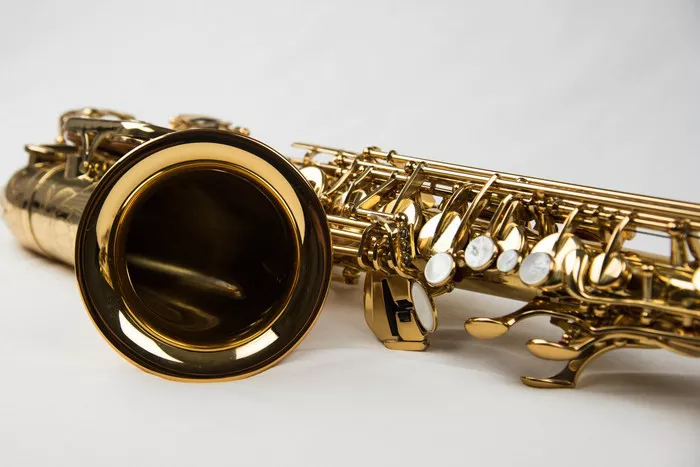The saxophone, with its sultry tones and versatile capabilities, has long been a staple in various genres of music. One question that often arises is whether the saxophone is an acoustic instrument. In this comprehensive exploration, we will delve into the essence of the saxophone, discussing its acoustic nature, its distinctive sound production, and the role it plays in the realm of acoustic instruments.
I. Defining Acoustic Instruments
To understand whether the saxophone qualifies as an acoustic instrument, it’s crucial to establish a clear definition of what constitutes an acoustic instrument. Acoustic instruments, in the broadest sense, are those that produce sound through the vibration of air without electronic amplification.
II. The Anatomy of the Saxophone: A Blend of Brass and Woodwind
The saxophone, invented by Adolphe Sax in the mid-19th century, is a unique hybrid that combines characteristics of both brass and woodwind instruments. Its structure comprises a brass body with a conical bore and a single-reed mouthpiece, similar to woodwind instruments like the clarinet.
A. Brass Body
The saxophone’s brass body is integral to its acoustic properties. The vibrations generated within the metal tube produce the instrument’s distinctive sound. The size and shape of the saxophone contribute to its tonal characteristics, ranging from the bright and piercing soprano saxophone to the rich and resonant bass saxophone.
B. Single-Reed Mouthpiece
The single-reed mouthpiece of the saxophone is a woodwind characteristic that sets it apart from traditional brass instruments. The reed, typically made of cane, vibrates against the mouthpiece when air is blown into it. This vibration sets the entire instrument in motion, creating sound waves that form the basis of the saxophone’s acoustics.
See Also: How Loud Is a Saxophone: Things You Need To Know
III. Sound Production: A Harmonious Dance of Vibrations
The saxophone’s acoustic nature comes to life through the intricate dance of vibrations that occur within the instrument. Understanding how sound is produced in the saxophone sheds light on its classification as an acoustic instrument.
A. Reed Vibration
When a saxophonist blows air into the mouthpiece, the single reed vibrates against the mouthpiece, initiating the sound production process. The vibration of the reed is a fundamental element of the saxophone’s acoustic mechanism.
B. Air Column Vibrations
As the reed vibrates, it creates pulses of compressed air that travel down the saxophone’s conical bore. The interaction of the vibrating air column with the saxophone’s body amplifies and shapes the sound waves, giving each saxophone type its distinct tonal quality.
IV. The Role of Resonance in Saxophone Acoustics
Resonance plays a crucial role in shaping the acoustics of the saxophone. The resonant frequencies of the saxophone’s metal body amplify specific harmonics, contributing to the instrument’s unique timbre.
A. Resonance in the Body
The material, thickness, and shape of the saxophone’s brass body influence its resonant properties. The harmonic frequencies that resonate within the instrument enhance certain overtones, contributing to the saxophone’s characteristic sound.
B. Harmonic Richness
Saxophones are known for their harmonic richness, allowing for a wide range of expressive possibilities. The interplay of resonant frequencies within the saxophone creates a complex and layered sonic palette.
V. Acoustic Versatility: From Classical to Jazz
The saxophone’s acoustic versatility is evident in its seamless integration into various musical genres, from classical and orchestral settings to jazz, blues, and beyond. Its adaptability showcases the instrument’s inherent acoustic nature.
A. Classical Application
In classical music, the saxophone is featured in orchestras and chamber ensembles, demonstrating its ability to produce nuanced and expressive acoustic tones. Composers harness the instrument’s unique qualities to evoke a range of emotions and atmospheres.
B. Jazz and Contemporary Styles
Jazz, with its emphasis on improvisation and individual expression, has embraced the saxophone as a quintessential voice. In the world of jazz, the saxophone’s acoustic properties shine through, allowing for dynamic and soulful performances.
VI. The Role of Amplification in Performance Settings
While the saxophone is fundamentally an acoustic instrument, contemporary performance settings often involve amplification to enhance its presence in larger venues or alongside amplified instruments.
A. Microphone Usage
In live performances, saxophonists may use microphones to amplify their sound, ensuring that the intricacies of their playing are projected to a larger audience. However, it’s crucial to note that the saxophone’s core acoustic nature remains unchanged.
B. Fusion with Electric Instruments
In certain genres, such as fusion and contemporary jazz, the saxophone may be integrated into ensembles with electric instruments. While amplification is employedfor balance, the saxophone’s acoustic character remains fundamental to its contribution to the ensemble’s overall sound.
VII. The Essence of Acoustic Expression
Ultimately, the saxophone’s classification as an acoustic instrument is rooted in its ability to produce sound through the vibration of air without electronic amplification. The interplay of reed vibration, air column dynamics, and resonant frequencies within the saxophone creates a rich and expressive acoustic experience.
VIII. Conclusion: Celebrating the Acoustic Soul of the Saxophone
In conclusion, the saxophone stands as a remarkable testament to the fusion of brass and woodwind elements, offering a unique acoustic experience. Its versatility across genres, from classical to jazz, underscores its adaptability and expressive potential. While amplification may be utilized in certain performance contexts, the saxophone’s essence lies in its acoustic soul, weaving a tapestry of sound that continues to captivate audiences and musicians alike.


